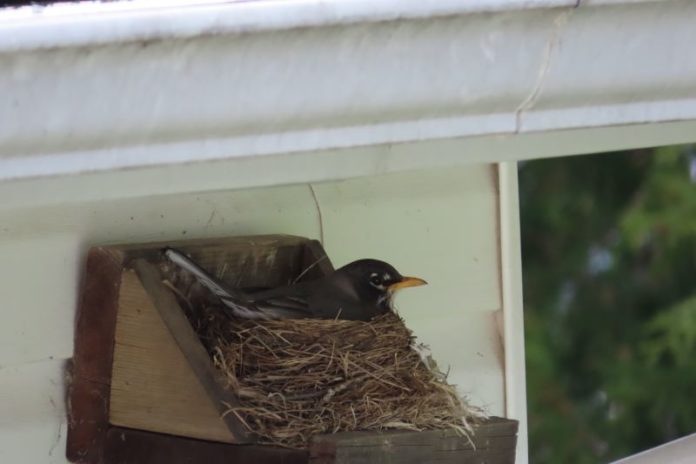Our now much brighter coloured feathered friends, are looking resplendent, as they are caught in the bright sun’s rays when they come to feed. What a treat we are getting, as Nature takes its course, and the birds go through their mating rituals, to attract a partner to be able to produce this year’s offspring. Their bright plumage is just one part for some of them, but there are still those who also go through other mating rituals. Yesterday a pair of Cardinals were down on the ground and appeared to be kissing, although I suspect that one of them was treating the other to some seed, just to say,—“Look I can provide for you and our “family-‘to- be” , if you take me for your partner!”
Other birds have different ways of trying to attract a partner, such as the Cowbirds and Grackles, who wheeze out or, is it, squeeze out a raucous sound as they fluff up their shining feathers, to impress? The Redwing Blackbirds tend to be noisy too and the male Rock Pigeons ruffle up their iridescent neck feathers and strut proudly in front of their potential partner, in their mating display efforts to impress. However a much more refined approach is made by the beautifully serene Mourning Doves, who usually tend to be in pairs on a daily basis anyway! In yesterday’s late afternoon sunshine a pair of them were just hunkered down on the grass very close to each other, seemingly, just enjoying each others company!
Whilst some of the birds are “doing their thing” in order to get started with their family life there are some who get on with it fairly quickly! In this category I would put the Robins who sometimes build two or three nests during the warmer months of the year., so don’t have much time to hang about! As can be seen in the picture that my wife took, one of our Robins has already built on my small nesting platform, above a garage door and is now occupying it. Nearby another nesting box is, as near as we can tell, being occupied by a Bluebird. We are still not one hundred percent certain of this because they do make false nests to deter predators, whilst still having one situated elsewhere. If they are not using this particular nesting box they will have to keep an eye out, because a House Wren has made its appearance in the garden and it has used this particular box before too!
I hope that you are able to see for yourself what is going on in your own garden and that you are enjoying what the birds provide for us. Stay safe and well.
Cheers,
John Baldwin



